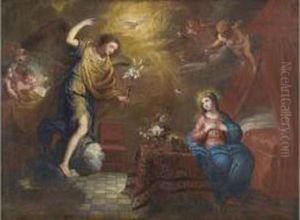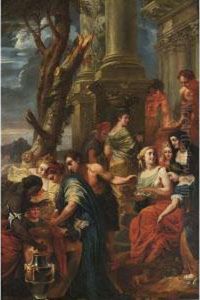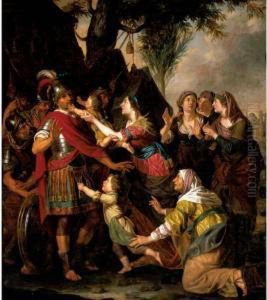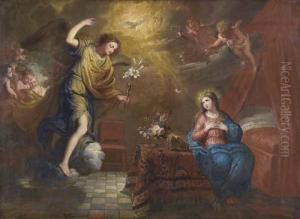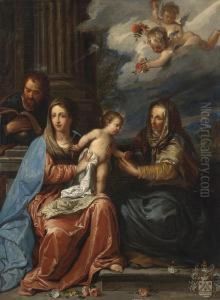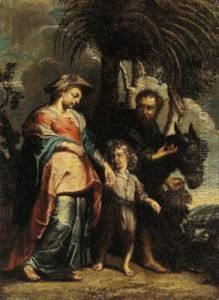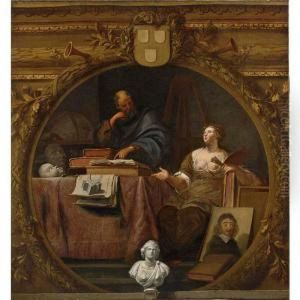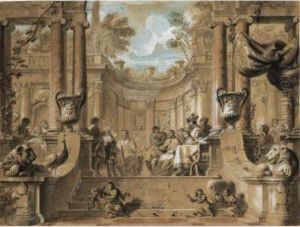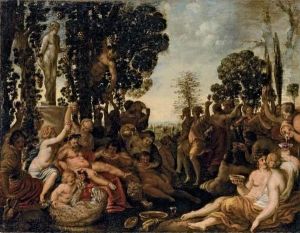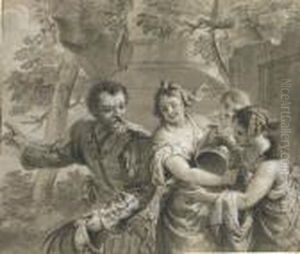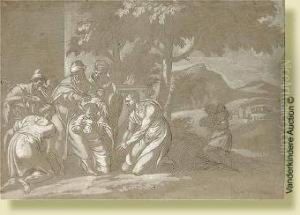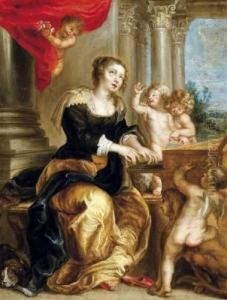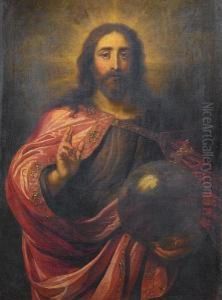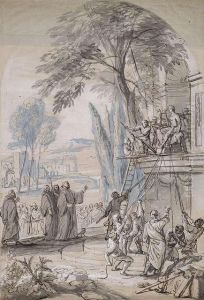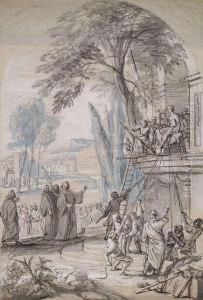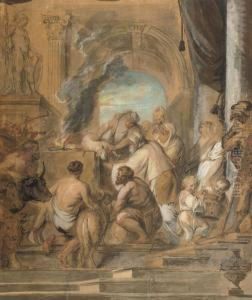Jan Erasmus Ceder Quellinus Paintings
Jan Erasmus Quellinus, also known as Jan Erasmus Quellinus the Younger, was a distinguished Flemish Baroque painter, born in 1634 in Antwerp, Belgium. He hailed from an illustrious family of artists; his father, Erasmus Quellinus II, was a renowned painter, and his uncle, Artus Quellinus the Elder, was a famous sculptor. This environment imbued Jan Erasmus with a profound appreciation for art from a young age, setting the stage for his eventual career in the arts.
Quellinus received his initial training from his father, which was common in the artistic dynasties of the time. His early works demonstrate a strong influence from his father's style, as well as from other prominent Flemish artists of the period, such as Peter Paul Rubens. Quellinus's talent and skill flourished quickly, allowing him to establish his own distinct style. He became known for his intricate historical and mythological scenes, characterized by their dynamic composition, detailed figures, and vibrant use of color.
In 1656, Quellinus became a master in the Guild of Saint Luke in Antwerp, signifying his acceptance and recognition as a professional artist. His reputation grew, and he received commissions from churches, monasteries, and private patrons across the Flemish region. Quellinus's work was not only limited to paintings; he also excelled in creating elaborate altar pieces and designing tapestries, showcasing his versatility as an artist.
Quellinus's travels to Italy in the later 1650s played a significant role in the evolution of his artistic style. During his time in Italy, he was exposed to the works of the Italian masters, which influenced him to incorporate more light, shadow, and a greater sense of drama into his paintings.
After returning to Antwerp, Quellinus continued to work and contribute significantly to the Flemish art scene. He collaborated with other artists and took on students, passing on his skills and knowledge to the next generation of painters. Despite facing competition from other talented artists of his time, Quellinus maintained a successful career.
Jan Erasmus Quellinus died in 1715, leaving behind a legacy of artistic excellence that had a lasting impact on the Baroque period in Flanders. His works are still celebrated today for their beauty, intricacy, and emotional depth, and they can be found in museums and collections around the world.
